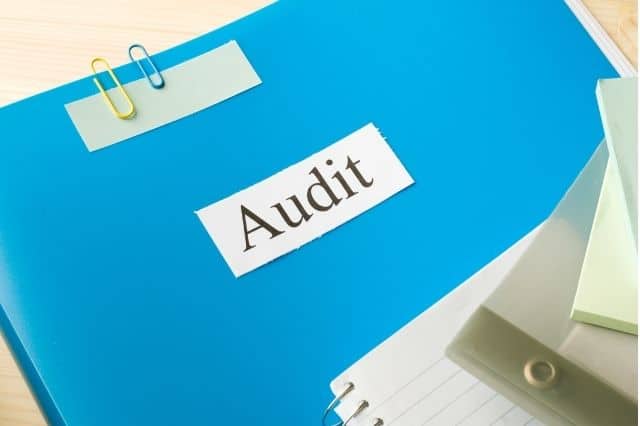Approaches to HR Evaluation
There are several approaches to human resource evaluation. The most prominent of them are: audit approach, analytical approach, qualitative and quantitative approach, balanced scorecard perspective, and benchmarking.
1. Audit Approach
A human resource management audit is a process of evaluating the effectiveness of the HR function. The HRM audit, as its financial audit counterpart, possesses the following elements:
• Independence from the subject being audited
• Technical work in the form of a systematic gathering and analysis of data
• An evaluation of the HR activities, policies, and systems based on the evidence
• A clearly defined objective of the process
• Action in response to audit findings.
Human resource management audit offers several benefits as outlined below::;
HR Audit-
• Provides verifiable data on the human resource management function
• Clarifies the HR function’s duties and responsibilities
• Identifies critical HR problems
• Helps align HR strategy with organizational strategy
• Improves the status of the HR function
• Helps reduce HR costs
• Helps review and improve the HRIS.
HR audit may be partial or total. Where it is partial, HR audit covers a few areas of HR. for example, the compliance of managers and supervisors with the established HR principle and practices. In the comprehensive audit system, all HR activities such as HRP, employee hiring, training and development, performance management, employee well-being, safety and health, Industrial Relations, and the like will be covered. Better results from an HR audit will be obtained where it is comprehensive.
Approaches to HR Audit
Auditors may adopt any of the five approaches for the purpose of evaluation: (i) comparative approach, (ii) outside authority approach, (iii) statistical approach, (iv) compliance approach, and (v) Management By Objectives (MBO) approach. It may be stated that irrespective of the approach, the data for assessment are provided by HR research.
In the comparative approach, the auditors identify another company as the model. The results of their organization are compared with those of the model company. Often, the auditors use standards set by an outside consultant as a benchmark for comparison of their own results. This approach is called the outside authority approach.]
Statistical Approach.
The third approach is the statistical approach. Here, statistical measures of performance are developed based on the company’s existing information. Examples of such measures-are absenteeism and turnover rates. These data help auditors assess the performance.
In the compliance approach, auditors review past actions to determine if they comply with legal requirements and company policies and procedures. A final approach is for specialists and operating managers to set objectives in their area of responsibility. The MBO approach creates specific goals against which performance can be measured. Then the audit team researches actual performance and compares it with the objectives.
2. Analytical Approach
The second approach to human resource management evaluation is the analytical one. The analytical approach relies on cost-benefit analysis, also called the utility analysis. Utility analysis seeks to express evaluations in economic terms, which are more useful for decision-makers. Several HR activities have been evaluated with utility analysis, including appraisal systems, employee hiring, training, and turnover.
Although utility analysis has wide applicability and represents a quantitatively superior means of evaluating HR activities, the process is difficult. Because of this difficulty, and the number of resources and effort required for analysis, its use has been limited to only certain specific situations.
3. Qualitative and Quantitative Indices
A number of quantitative indices or metrics are available to determine the effectiveness of HRM. For example, one can calculate the cost of turnover, absenteeism cost, cost of work-life programs, cost per hire, lead time to fill vacancies, HR expense factor, training costs, and the like. Sears, Roebuck, and Co. applied behavior-costing methodology to study the relationship between employee attitudes, customer behavior, and profits.
In retailing, for example, there is a chain of cause and effect running from employee behavior to customer behavior to profits. The human resource management department itself can be treated as a profit center. These and other indicators, when calculated and compared with other firms, give a fair picture of the outcome of HR functions and activities. Excessive reliance on quantitative indices to evaluate HRM effectiveness, however objective they may appear may be dysfunctional.
4. Balanced Score Card
Developed by Robot Kaplan and David P.Norton, a balanced scorecard helps evaluate HRM effectiveness. The balanced scorecard contains four dimensions: the financial performance of an organization, its customer service, its internal business processes, and it’s capacity to learn and achieve growth. Within these four areas, managers need to identify key performance indicators the organization should track. The financial dimension reflects a concern that the organization’s activities contribute to improving short-term and long-term financial performance.
Customer service perspective measures such things as how customers view the organization, as well as customer retention and satisfaction. Business process indicators focus on production and operating statistics, such as order fulfillment or cost per order. The final component relates to the human resource-its potential to learn and grow. This perspective seeks to focus on how well resources and human capital are being managed for the company’s benefits.
The balanced scorecard provides a balanced picture of current performance as well as the triggers for future performance. The scorecard helps managers align their business units, as well as their financial, physical, and human resources, to the firm’s overall strategy.
What needs emphasis is that the HR evaluation should not confine only to people dimension of the scorecard. The HR professional should be judged on all the dimensions of the scorecard. HR executives tend to believe that their success should be judged only by the extent to which they meet employee needs. As the scorecard indicates, employee commitment is only one criterion for effective HR performance, and HR professionals will be held accountable for all the dimensions as other managers.
5. Benchmarking
Benchmarking involves employees learning and adopting the so-called “best practices” by comparing their human resource management practices with those of other (more successful) organizations. Benchmarking essentially involves that employees study the practices followed in competing firms and evaluating their own practices with those thus collected.
Besides the evaluation of their own HR practices, benchmarking enables managers to learn from other firms and adopt effective HR strategies. In addition, benchmarking can help create and initiate the need for change because it identifies what an organization needs to do to improve relative to the HR strategy in excellent companies
Benchmarking involves seven sequential steps:
1. Identify HR practices for benchmarking. Critical practices from the organization’s perspective are identified for benchmarking.
2. Constitute a core or a project team to handle the benchmarking process.
3. Identify benchmarking partners-organizations from the same or different industry, competitors or non-competitors, or international firms-who are known to have tried best practices successfully.
4. Collect data from each of the benchmarking partners (for example, firms A, B, and C).
5. Analyze and interpret the data.
6. Prepare a comprehensive report based on data analysis and interpretation.
7. Develop action plans to improve HR strategy and practices.












